Did you know that nearly 60% of landscape trees show visible signs of winter burn after particularly harsh winters? This widespread issue isn’t reserved for forests—it strikes local neighborhoods and business districts just as hard. If you value the health of your trees and shrubs, understanding which species are at risk—and how to protect them—may be the difference between lush spring growth and a costly, unsightly loss. Read on to uncover why some trees are dangerously susceptible to winter burn, and what you can do now to safeguard your landscape.
Unveiling the Risks: The Real Impact of Winter Burn on Tree Species
Winter burn is more than a cosmetic annoyance—it’s a significant threat to tree species susceptible to winter burn, affecting not only visual appeal but long-term plant health and landscape value. When cold winter winds and intense winter sun dry out the foliage of evergreens and certain shrubs, the resulting water loss can trigger widespread browning, needle drop, and even plant death. The combination of frozen ground, cold temperatures, and winter sun and wind strips moisture from exposed leaves and needles. Since the root system can’t replace the water quickly enough, susceptible trees and shrubs suffer tissue damage that often doesn’t reveal itself until early spring.
Such winter injury is especially worrisome for evergreens like white spruce, arborvitae, and yew, which retain their needles through the season. Unlike deciduous trees, which drop their leaves and await spring, evergreens remain active targets for water loss all winter. The damage isn’t isolated to severe winters—mild winters with prolonged sun or fluctuating temperatures can be just as harsh, especially for newly planted or poorly positioned trees. Understanding these risks helps homeowners and landscapers prioritize preventive steps and avoid misdiagnosing winter damage as disease or nutrient deficiency.
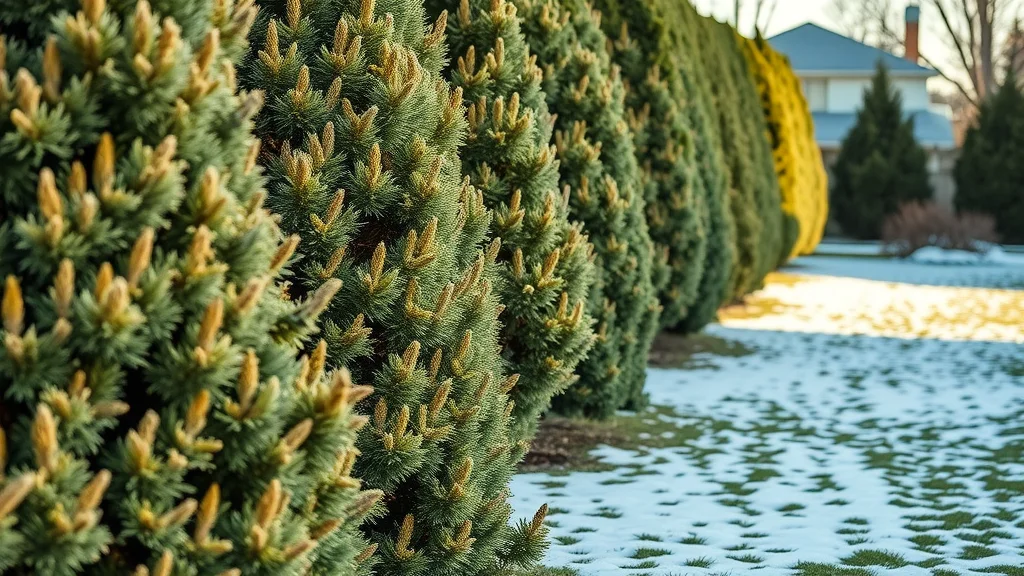
Unexpected Facts About Tree Species Susceptible to Winter Burn
It surprises many people that even healthy, established trees and shrubs can experience winter injury, especially if they are tree species susceptible to winter burn. It is not just the harshest climates that create problems—a combination of winter wind, sudden thaws, and cold snaps can even cause damage in areas known for mild winters. South and southwest exposures are more vulnerable, as winter sun and wind team up to dehydrate the evergreen foliage. Mulch, often assumed to be beneficial, may not provide enough protection if placed improperly or if the wrong species are chosen for exposed sites.
"An estimated 60% of landscape trees show signs of winter burn damage after severe winters, threatening both commercial and residential plantings."
This elevated risk underscores why species like white spruce, arborvitae, yew, and Canadian hemlock are regularly flagged by arborists and extension services as 'prone to winter burn.' Even trees with drought-resistant reputations will fail if their root systems cannot replace the water lost by exposed leaves and needles. By knowing what species are most at risk, you can plan plantings, protective measures, and maintenance routines more effectively all winter long.
While understanding winter burn is crucial, it's equally important to recognize how severe weather events can compound risks for your landscape. For example, storms not only cause immediate damage but can also leave trees more vulnerable to winter injury. To see how extreme weather impacts tree health and homeowner safety, explore the tragic toll of severe storms in St. Louis and the lessons for property owners.
What You'll Learn About Tree Species Susceptible to Winter Burn
- How to identify tree species susceptible to winter burn
- Factors making certain trees and shrubs more vulnerable
- Strategies to prevent winter damage and winter injury
- Expert recommendations for protecting at-risk tree species
Understanding Winter Burn: Causes, Symptoms, and Effects on Trees and Shrubs
Winter burn is the direct result of a tree or shrub losing more water from its foliage than the root system can replace when the ground is frozen. This occurs primarily in evergreen plants, which maintain their leaves or needles throughout the winter months. The combination of low soil temperature, icy winds, and bright winter sun accelerates water loss, especially during late fall through early spring. In these conditions, even trees that appeared healthy at the end of the growing season can suddenly turn brown, with entire branches affected by the time winter ends.
Symptoms include browning and curling of leaf edges, needle discoloration, and extensive dieback in some cases. Winter injury often presents on the side of the tree or shrub facing the winter wind or the sunniest exposure, resulting in an uneven pattern of damage. While water loss is the core issue, winter burn can also be exacerbated by poor site selection, improper mulching, late pruning, or planting species that are innately prone to winter burn. The long-term impact can include stunted growth, diminished vigor, and increased vulnerability to disease and secondary pests.
Winter Burn vs. Other Winter Injury: What Makes Them Different?
Understanding winter burn versus other forms of winter injury is crucial for effective diagnosis and treatment. While winter burn occurs due to excessive water loss from leaves and needles, other types of winter damage, such as frost cracks or dieback, result from fluctuating winter temperatures that physically damage cells or bark. For example, frost injury often manifests as longitudinal splits in tree bark—especially on the trunks or large branches—whereas winter burn is distinctive for its widespread discoloration and dieback on evergreen foliage.
Winter sun and wind tend to target the foliage, causing visible browning and desiccation. By contrast, fluctuating winter temperatures and sudden thaws can stress the stem and root tissues, especially in newly planted trees, potentially killing entire sections above ground. Effective winter care requires not only the ability to spot common signs of winter burn but to differentiate it from mechanical or physiological injuries brought on by variable winter conditions. This ensures that treatment and prevention strategies specifically target the right problem.
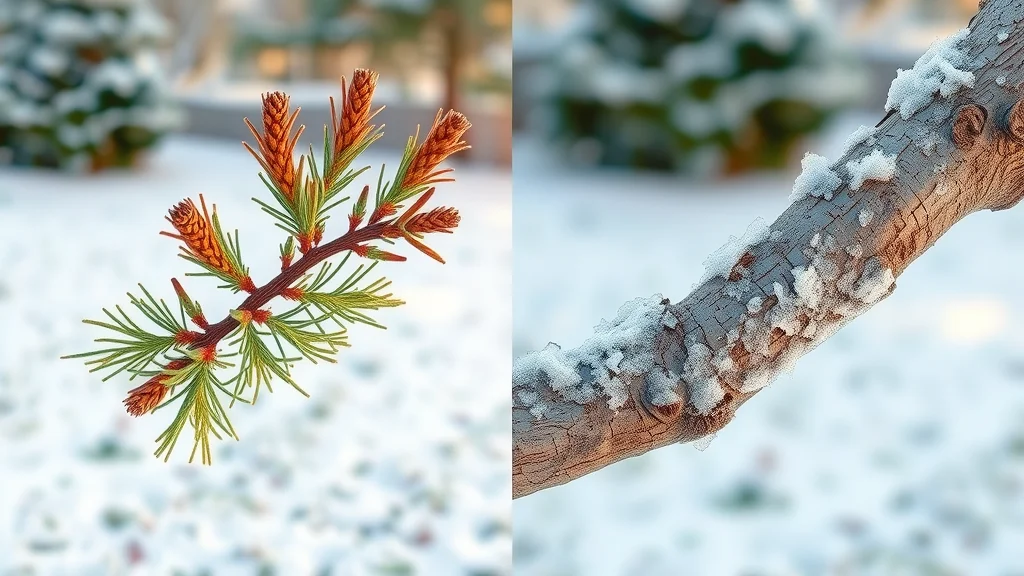
Common Signs of Winter Burn on Susceptible Tree Species
Identifying winter burn early can make all the difference in recovery for tree species susceptible to winter burn. Most frequently, affected trees will display browning or bleaching on the foliage, with the most severe symptoms occurring on windward or sun-exposed sides of the plant. In evergreens, whole sections or individual shoots may turn brown or even red, with needles becoming brittle and prone to dropping prematurely. New growth may be stunted or absent, especially in late winter and early spring, when the cumulative effects of water loss become most apparent.
Look closely for curling or drying at leaf and needle tips, as well as uneven patterns of discoloration—classic indicators of water loss rather than localized disease. In some species, such as yew, the needles may become yellow or rusty before ultimately dying back at the tips. Evergreen plants like arborvitae can exhibit entire frond die-off, making lime-green shrubs suddenly appear scorched or coppery brown. If detected early, intervention is possible, but late discovery often means permanent branch loss or the need for extensive pruning to reshape the tree or shrub.
Tree Species Susceptible to Winter Burn: A Comprehensive List
Some trees and shrubs are consistently flagged by industry professionals as being highly susceptible to winter burn. These include various evergreens, broadleaf evergreens, and even some conifers and groundcovers. The following table summarizes the most vulnerable tree species, their susceptibility levels, typical symptoms, and practical recommendations to prevent winter injury in both residential and commercial landscapes.
| Species | Susceptibility Level | Typical Symptoms | Recommendations |
|---|---|---|---|
| White Spruce | High | Browning needles, needle drop | Shelter, mulching |
| Arborvitae | High | Browning/leaves, twig dieback | Burlap wraps, proper watering |
| Yew | Moderate | Needle discoloration, tip dieback | Shaded planting, anti-desiccants |
| Canadian Hemlock | Moderate | Needle browning, stunted growth | Windbreaks, shading |
Highly Susceptible Trees and Shrubs: Which to Watch Closely
Among the most at-risk tree species susceptible to winter burn, white spruce, arborvitae, and yews regularly top the list. These species possess dense foliage that actively loses water throughout winter, especially when sun and wind are prevalent. Arborvitae and white spruce, in particular, can turn brown from tip to stem if exposed to repeated cycles of winter wind and winter sun. Canadian hemlock, although less frequently used in landscapes, also suffers considerable winter damage in unprotected locations or regions with severe winter conditions.
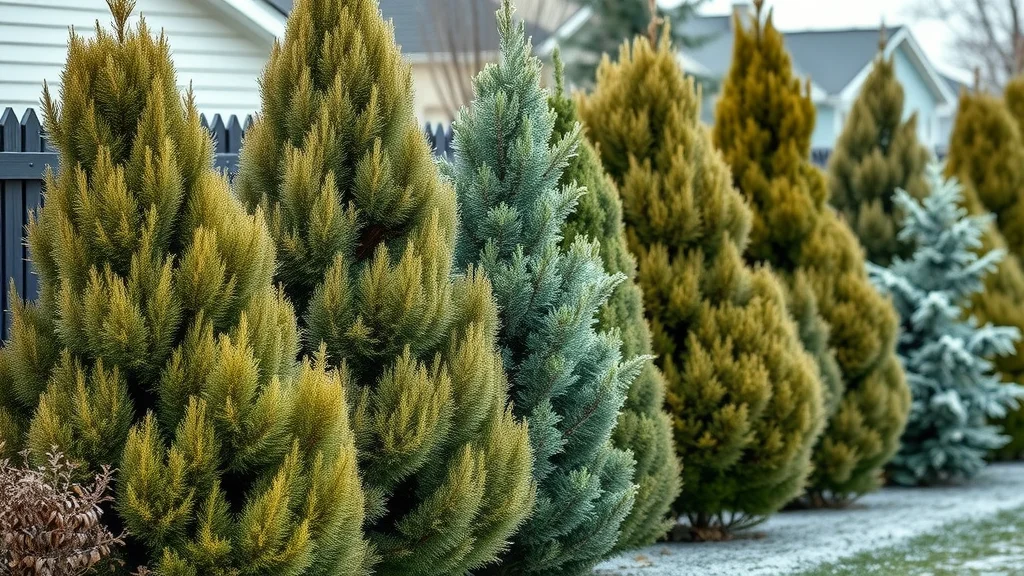
Careful observation in late fall and early spring can help you spot early warning signs. Homeowners and property managers should pay special attention to newly planted or unestablished trees and shrubs, as their root systems are not yet capable of replacing the water lost during windstorms or thaw periods. These vulnerable species often benefit from additional wind protection, anti-desiccant sprays, and careful site selection as a part of their winter care routines.
Why Some Tree Species Are More Vulnerable to Winter Burn and Winter Injury
The susceptibility of a tree or shrub to winter burn often boils down to both species genetics and external factors like site, soil, and climate. Evergreens, which keep their leaves year round, are naturally at greater risk because their foliage remains exposed to winter temperatures, sun, and wind. Shallow-rooted species, or those growing in poorly drained soils, are also more likely to experience winter injury since water uptake is limited when the ground is frozen solid. Additionally, trees planted in open, windy locations or areas with low snow cover are far more exposed to drying winter conditions.
Name recognition matters here—arborvitae, white spruce, and yew are routinely noted in extension service bulletins and professional guides as “prone to winter burn” due to the way their leaves transpire even when the soil is still cold or frozen. The degree of winter damage they experience can be directly affected by factors such as recent pruning (which exposes new, tender growth), poor mulching, and the use of salts on nearby roads—all of which combine to amplify winter stress and compound injury.
Winter Damage and Salt Damage: Double Threats for Trees and Shrubs
Many property owners are unaware that winter burn often travels hand in hand with salt damage—making these the top two threats for trees and shrubs growing near salted roads or driveways. While winter burn results from water loss due to sun and wind, salt damage occurs when de-icing salts dissolve into melted snow and are absorbed by foliage or leach into the root zone. This chemical stress can cause symptoms similar to winter burn, including browning, leaf curl, and shoot dieback, particularly on road-facing sides of trees and shrubs.
Double exposure is especially harmful to tree species already susceptible to winter burn. Salt spray during a mild winter can settle on leaves and needles, drawing out even more moisture and making the effects of winter injury worse. Road salt in melting snow also raises soil salinity, hindering the plant's ability to take in water at a time when it’s most desperately needed. For landscape trees and shrubs planted in these high-risk areas, prevention strategies must address both forms of winter damage for true protection.
How Salt Damage Compounds Winter Burn in Sensitive Species
Salt damage not only mimics the visual cues of winter burn but actively amplifies them. Sensitive species like arborvitae and white spruce are especially at risk near roadways, where passing cars create salt spray that lodges on needles and leaves. The accumulating residue draws moisture out of plant cells, intensifying water loss at a critical time when roots cannot effectively replace the water due to frozen ground or low soil temperature. This makes it harder for the tree or shrub to recover once spring arrives, often leading to more severe winter injury and, in some cases, permanent dieback.
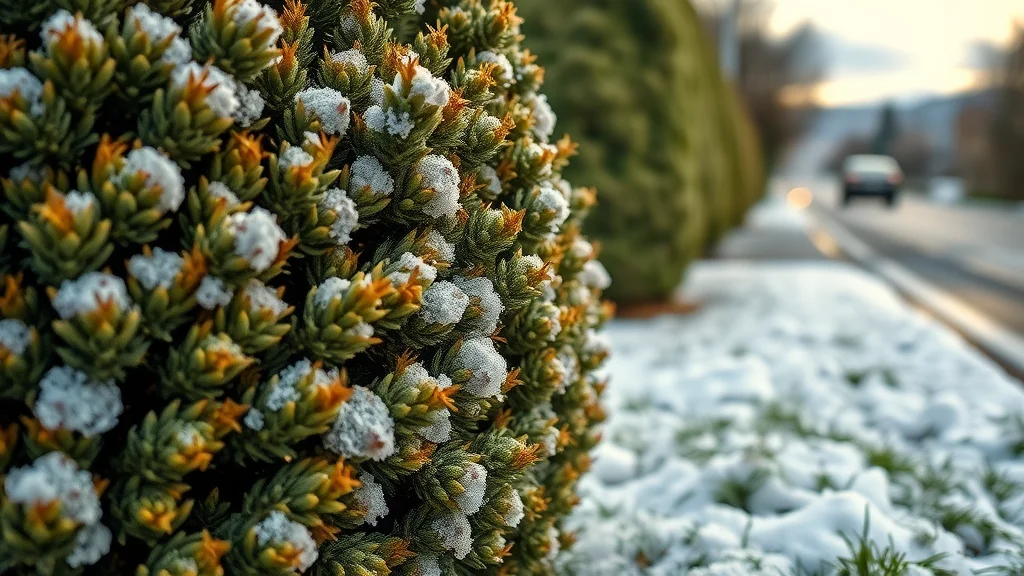
Observing the exact placement of browning—usually on the side facing a salted road or sidewalk—can help differentiate salt damage from pure winter burn. Remediation often involves flushing the root zone thoroughly in early spring and using barriers or alternative deicing agents during winter. Sensitive tree species in high-traffic zones benefit greatly from physical barricades such as burlap screens, positioned to intercept winter sun and wind while also blocking salt spray from settling onto exposed foliage.
Best Practices for Preventing Winter Burn in Tree Species
- Proper site selection and species choice: Plant tree species less susceptible to winter burn in exposed or windy sites, and avoid high-risk species along salted roads.
- Seasonal watering and mulching: Water thoroughly in late fall before freeze-up and apply a thick layer of organic mulch to stabilize soil temperature and moisture.
- When and how to use protective wraps and anti-desiccants: Use burlap wraps or anti-desiccant sprays on evergreens and newly planted trees for added protection.
- Creating natural windbreaks: Position hedges, fences, or other evergreens to buffer at-risk trees and shrubs from prevailing winter winds.
- Timing of pruning: Prune in late winter or early spring, just before new growth starts, to limit exposure of tender branches to the harshest weather.
These steps address both the root causes of winter burn and salt damage, helping susceptible trees and shrubs not just survive, but thrive year after year. Prevention is most effective when started in late fall, as winter approaches and before severe conditions arrive.
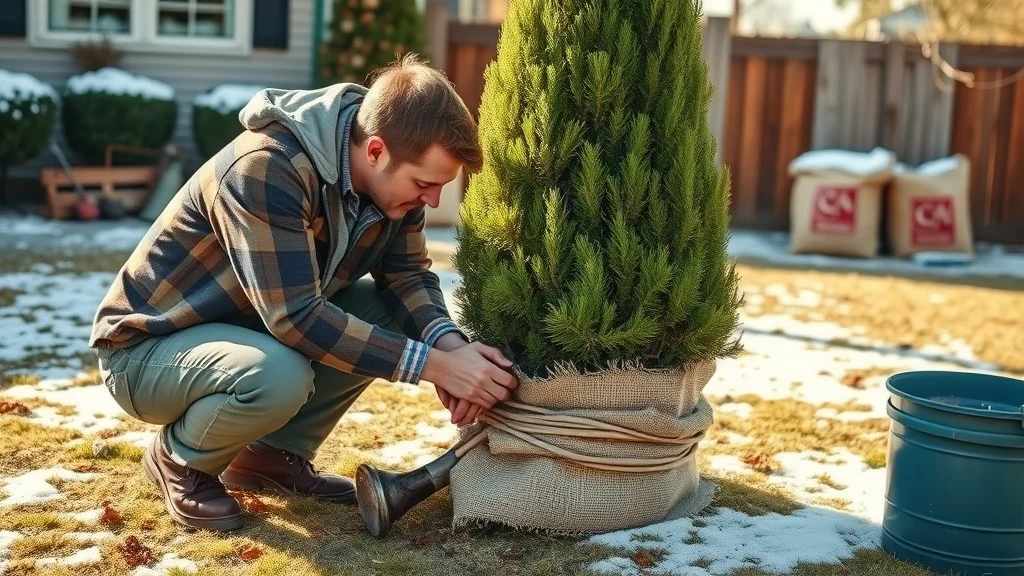
Expert Insight: Managing Winter Injury in Landscape Trees and Shrubs
"Healthy soils and thoughtful placement go a long way in minimizing winter burn on vulnerable tree species." – Certified Arborist, Tree Guardian News
Expert arborists emphasize healthy soils, correct species selection, and positioning as the foundation of a resilient landscape. These measures, combined with responsive seasonal care, dictate how well your trees and shrubs weather even the toughest winters. Don’t underestimate the value of proactive management: small preventive steps in late fall and early spring build long-term landscape health and beauty, reducing both stress and cost over time.
People Also Ask About Tree Species Susceptible to Winter Burn
Can Trees Get Windburn?
Yes, trees can experience windburn—a specific form of winter injury where harsh, dry winter winds accelerate water loss from leaves and needles. This effect is most prominent in evergreens and broadleaf evergreens, as their foliage is exposed year round. Windburned areas typically turn brown, dry, and brittle, especially on the side of the tree or shrub facing prevailing winter winds. Protection through windbreaks, mulching, and anti-desiccant sprays can help prevent winter burn and wind injury in vulnerable species during the winter months.
Will a Pine Tree Recover from a Winter Burn?
Recovery from winter burn in pine trees depends on the severity of the water loss and overall health of the tree. In mild cases, only the outermost needles are affected and new growth will generally emerge in spring, gradually replacing damaged tissue. However, if the burn is severe or the root system is compromised by frozen ground or salt damage, complete recovery may not occur without intervention. Early detection, prompt watering in early spring, and proper mulching boost the chances of a full rebound, but patience is required as recovery can take several seasons.
What Tree Is the Most Flammable?
While this isn’t directly related to winter burn, eastern white pine is often cited among the most flammable tree species due to its high resin content, loose bark, and long, dry needles. In contrast, many of the tree species susceptible to winter burn—such as arborvitae and yew—also possess volatile oils that increase fire risk, especially if large volumes of deadwood or browned foliage accumulate as a result of winter injury. Regular maintenance, debris removal, and moisture management are critical for both winter health and fire prevention.
What Is Winter Burn on White Spruce?
Winter burn on white spruce is characterized by extensive browning and needle drop, typically affecting exposed branches or those facing dominant winter winds. The combination of frozen ground and winter sun prevents the root system from replacing lost water, so the needles dry out and die. As a tree species highly susceptible to winter burn, white spruce in open sites or with inadequate winter protection will often show patches of scorched, brown needles in late winter and early spring, requiring targeted intervention to recover.
FAQs: Tree Species Susceptible to Winter Burn
-
Are deciduous trees affected by winter burn like evergreens?
Deciduous trees are much less likely to suffer winter burn because they lose their leaves before winter, reducing water loss. However, they can still experience other types of winter injury, such as frost cracking or root damage, especially if newly planted or exposed to severe winter temperatures. -
Should I fertilize trees in winter to prevent winter injury?
Fertilizing trees in winter is generally not recommended, as most trees and shrubs are dormant and unable to take up nutrients effectively. Apply fertilizer in early spring or early fall, when the root system is active and can utilize available nutrients for healthy growth and winter preparation. -
What is the best time to inspect for winter damage in trees and shrubs?
Inspection is best done in late winter to early spring, as the majority of symptoms—such as browning, dieback, or shoot death—become apparent once temperatures begin to rise and snow cover recedes. Early inspection allows you to take corrective action before the growing season is fully underway. -
How do I treat salt damage alongside winter burn?
Treat salt damage by thoroughly watering the affected area in early spring to flush excess salts from the soil, and by pruning damaged foliage as needed. Use organic mulch and physical barriers (like burlap) next winter to limit future exposure for tree species most susceptible to winter burn and salt injury.
Key Takeaways for Protecting Tree Species Susceptible to Winter Burn
- Not all trees are equally at risk for winter burn; evergreens are particularly susceptible.
- Preventive care, including site selection and seasonal maintenance, is crucial.
- Recognizing symptoms early increases chances of recovery for affected species.
Take Action to Protect Tree Species Susceptible to Winter Burn
Don’t let your investment in landscape trees suffer this winter: Grow your landscaping expertise—call 203-271-7991 or visit TreeGuardianNews.com to subscribe.
Protecting your trees from winter burn is just one aspect of comprehensive landscape care. As you build your knowledge, consider how broader weather patterns and severe storms can impact not only the health of your trees but also the safety of your property and community. For a deeper understanding of how extreme weather events shape our approach to tree care and homeowner preparedness, discover the insights and lessons from recent severe storms in St. Louis. By staying informed and proactive, you’ll be better equipped to safeguard your landscape against both seasonal threats and unexpected challenges.
Winter burn is a significant concern for many tree species, particularly evergreens and broadleaf evergreens that retain their foliage throughout the winter months. Understanding which species are most susceptible can help in implementing effective preventive measures.
Common Tree Species Susceptible to Winter Burn:
-
Arborvitae (Thuja spp.): These popular landscape evergreens are highly prone to winter burn, especially when planted in open, unprotected areas exposed to harsh winter conditions. (iowadnr.gov)
-
White Pine (Pinus strobus): Known for their soft, flexible needles, white pines can suffer from winter burn due to their sensitivity to cold, drying winds and sun exposure. (iowadnr.gov)
-
Yew (Taxus spp.): Yews are susceptible to winter burn, particularly when exposed to winter sun and wind, leading to needle browning and dieback. (mortonarb.org)
-
Canadian Hemlock (Tsuga canadensis): Hemlocks can experience winter burn, especially when planted in areas with significant sun exposure during winter months. (umass.edu)
-
Boxwood (Buxus spp.): As broadleaf evergreens, boxwoods are vulnerable to winter burn, particularly in regions with harsh winters and fluctuating temperatures. (chicagobotanic.org)
-
Rhododendron (Rhododendron spp.): These broadleaf evergreens can suffer from winter burn, especially when exposed to winter sun and wind. (chicagobotanic.org)
Preventive Measures:
-
Site Selection: Plant susceptible species in locations protected from prevailing winter winds and intense sun exposure.
-
Mulching: Apply a layer of mulch around the base to help retain soil moisture and regulate temperature.
-
Watering: Ensure adequate watering in late fall before the ground freezes to help plants maintain moisture during winter.
-
Protective Barriers: Use burlap screens or wraps to shield plants from harsh winds and sun.
-
Anti-Desiccant Sprays: Apply anti-desiccant sprays to foliage to reduce moisture loss during winter months.
By recognizing the species most at risk and implementing these preventive strategies, you can significantly reduce the likelihood of winter burn and ensure the health and vitality of your landscape plants.
 Add Row
Add Row  Add
Add 

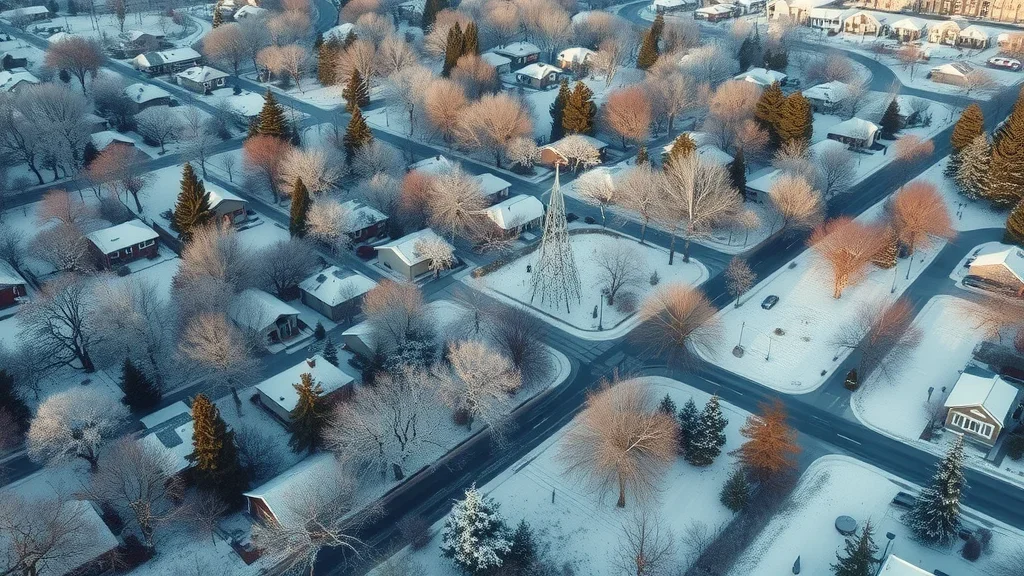
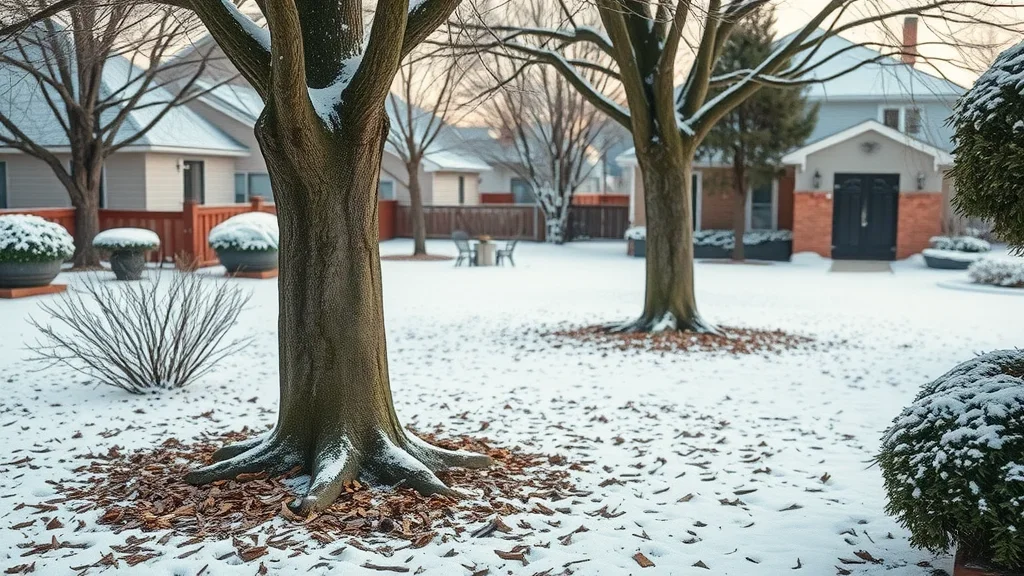
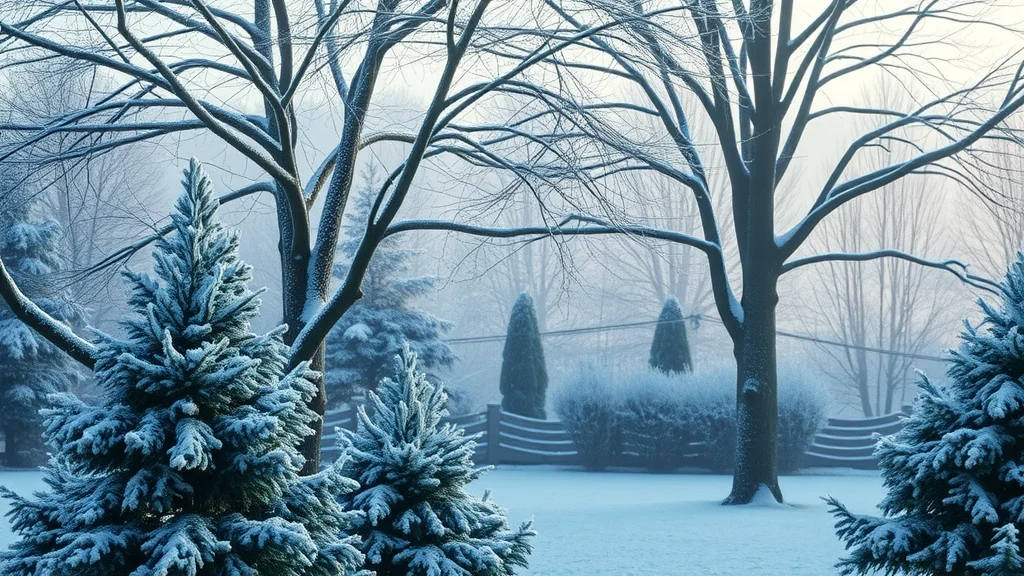
Write A Comment